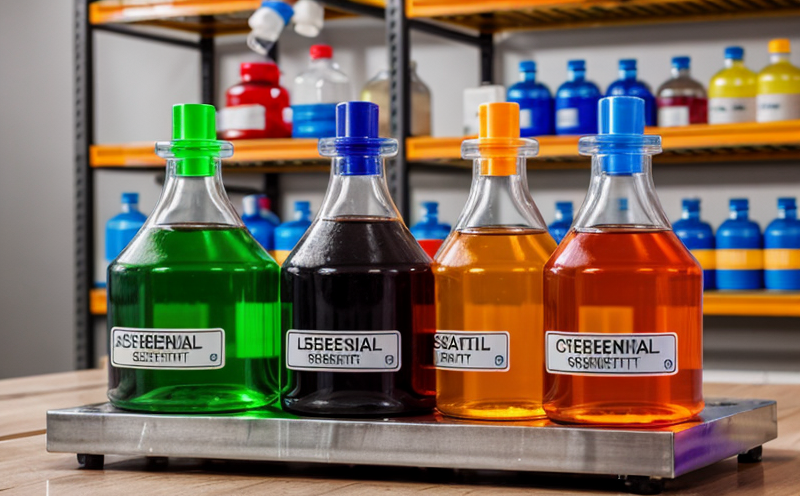Nitrosatable Substances Testing in Consumer Goods
The testing of nitrosatable substances in consumer goods is a critical step in ensuring product safety and compliance with international standards. Nitrosatable compounds, such as nitrobenzene, can undergo chemical reactions that form nitrosamines under certain conditions. These nitrosamines are classified as carcinogens and thus their presence in consumer products poses significant health risks.
Consumer goods include a wide range of items from textiles to toys, household items, and personal care products. The detection and quantification of nitrosatable substances is essential for manufacturers to comply with regulations such as the EU's Regulation (EU) No 528/2012 on the restriction of certain hazardous substances in electrical and electronic equipment.
The testing process involves several steps including sample preparation, extraction techniques, and analytical methods. Sample preparation may involve dissolving or extracting suspected nitrosatable compounds from the product using solvents like dichloromethane or acetonitrile. Extraction efficiency is crucial as incomplete extraction can lead to inaccurate results.
Once extracted, the samples are analyzed using high-performance liquid chromatography (HPLC) coupled with mass spectrometry (MS). This technique allows for precise identification and quantification of nitrosatable compounds. The method follows established standards such as ASTM D7654-19 which specifies test methods for determining nitroaromatics in water.
Compliance with these standards ensures that products are safe for consumers and meet regulatory requirements. Compliance officers, quality managers, and R&D engineers must ensure their processes adhere to these guidelines to avoid costly recalls and reputational damage.
- Why Use This Test: Ensures product safety, compliance with regulations, and protects consumer health.
- Importance of Compliance: Avoids legal penalties and maintains brand reputation.
The testing process is not only important for consumer goods but also extends to personal care products. For instance, nitrosatable compounds in hair dyes or nail polishes can pose risks if they form nitrosamines during use. This underscores the importance of rigorous testing across all sectors where nitrosatable substances may be present.
Manufacturers should consider long-term environmental impacts when selecting materials that undergo such tests. Sustainable practices are essential to minimize waste and reduce harmful emissions. By choosing eco-friendly solvents for extraction, companies can contribute positively to the environment while ensuring product safety.
Why Choose This Test
- Guaranteed Compliance: Ensures that all products meet regulatory standards.
- Consumer Safety: Protects the health of end-users by preventing harmful compounds from entering the market.
- Reputation Protection: Maintains brand reputation and consumer trust.
The decision to conduct nitrosatable substances testing is not merely a compliance measure but also an ethical responsibility towards consumers. By choosing this test, companies demonstrate their commitment to product safety and environmental sustainability.
Quality and Reliability Assurance
Reliable quality assurance in the field of consumer goods requires stringent adherence to standards like ISO 17025 for testing laboratories. This ensures that all tests are conducted under controlled conditions, using calibrated equipment, and by trained personnel.
The reliability of test results is paramount. To achieve this, laboratories must undergo regular calibration checks and method validation exercises. These measures ensure consistent and accurate results across multiple samples and batches.
In terms of quality assurance, laboratories should maintain detailed records of all tests conducted, including procedural details, equipment used, and the results obtained. This documentation helps in tracing any discrepancies back to their source and ensures continuous improvement in testing processes.
Environmental and Sustainability Contributions
The environmental impact of nitrosatable substances testing is significant. The use of solvents like dichloromethane or acetonitrile can lead to waste if not managed properly. Sustainable practices such as recycling these solvents, using eco-friendly alternatives where possible, and minimizing water usage are crucial.
By adopting a sustainable approach in their operations, laboratories contribute positively to environmental conservation. This aligns with broader corporate sustainability goals and helps companies meet green certification requirements.





